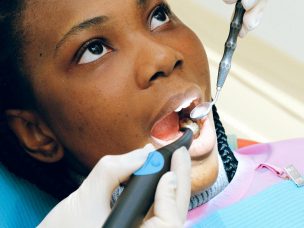The onset of atopic dermatitis in infants is difficult to predict, but this study shows that a high degree of accuracy can be achieved with the use of cutaneous biomarkers.
Predictive biomarkers that relate to pediatric atopic dermatitis (AD) are currently not well understood. This study, published in the journal Allergy, analyzed biomarkers related to pediatric AD in order to determine whether or not they can be used to make predictions about the onset and presentation of the disease. A parental history of AD and other atopic conditions, and the occurrence of common filaggrin gene mutations have been previously associated with pediatric AD, but identifying and understanding additional biomarkers can help the ongoing process of understanding how to manage the progression of AD through childhood. Additional mitigating factors, including nano-size protrusions of unknown composition, have been identified in non-lesional AD skin. The focus of this study was on examining skin biomarkers collected from infants with normal skin at 2 months after birth and comparing them to those of children who developed pediatric AD during their first year of life.
Methods for Biomarker Evaluation in Infants with AD
This study relied on data from a birth cohort study that examined the occurrence of physician-diagnosed AD in 300 children. Of those children, 44 with onset of AD in their first year of life were matched for sex and birth season with healthy controls that did not develop AD. The biomarkers that were looked at in this study include natural moisturizing factor (NMF), corneocyte surface protrusions, cytokines, free sphingoid bases (SBs) with different chain lengths, and their ceramides. Samples were gathered from tape strips at 2 months, prior to the onset of AD. These samples were analyzed using liquid chromatography, multiplex immunoassay, atomic force microscopy, and liquid chromatography mass spectrometry.
The authors found significant results for four lipid markers. Phytoshpingosine levels were lower in children who later developed AD compared to the healthy controls, and the two groups of children differed with regard to the amounts of SB of different chain lengths. Overall, phytosphingosine had the highest accuracy for prediction among the different biomarkers, at 75.6%. The combination of 5 lipid ratios gave an accuracy of 89.4%.
Using Biomarker Predictions and Understanding Why They Work
This study was the first to find significant changes in biomarkers in the skin barrier in normal skin of newborns that developed AD within a year of birth. This information can serve to provide initial context to understand and develop more comprehensive treatment and prediction methods for this cohort. These findings also support the outside-inside hypothesis, and put lipid alterations at the core of AD pathogenesis. This shows the essential role that lipids play in skin homeostasis and the development of AD in a way that hasn’t yet been observed. Although the methods are still in their early stages, these data show that cutaneous biomarkers can indeed be used to predict the onset of AD in children, and should be used for these predictions when necessary and available.
Source:
Rinnov, M. R., Halling, A. S., Gerner, T., Ravn, N. H., Knudgaard, M. H., Trautner, S., Goorden, S. M. I., Ghauharali-van der Vlugt, K. J. M., Stet, F. S., Skov, L., Thomsen, S. F., Egeberg, A., Rosted, A. L. L., Petersen, T., Jakasa, I., Riethmüller, C., Kezic, S., & Thyssen, J. P. (2023). Skin biomarkers predict development of atopic dermatitis in infancy. Allergy, 78(3), 791-802. https://doi.org/10.1111/all.15518










